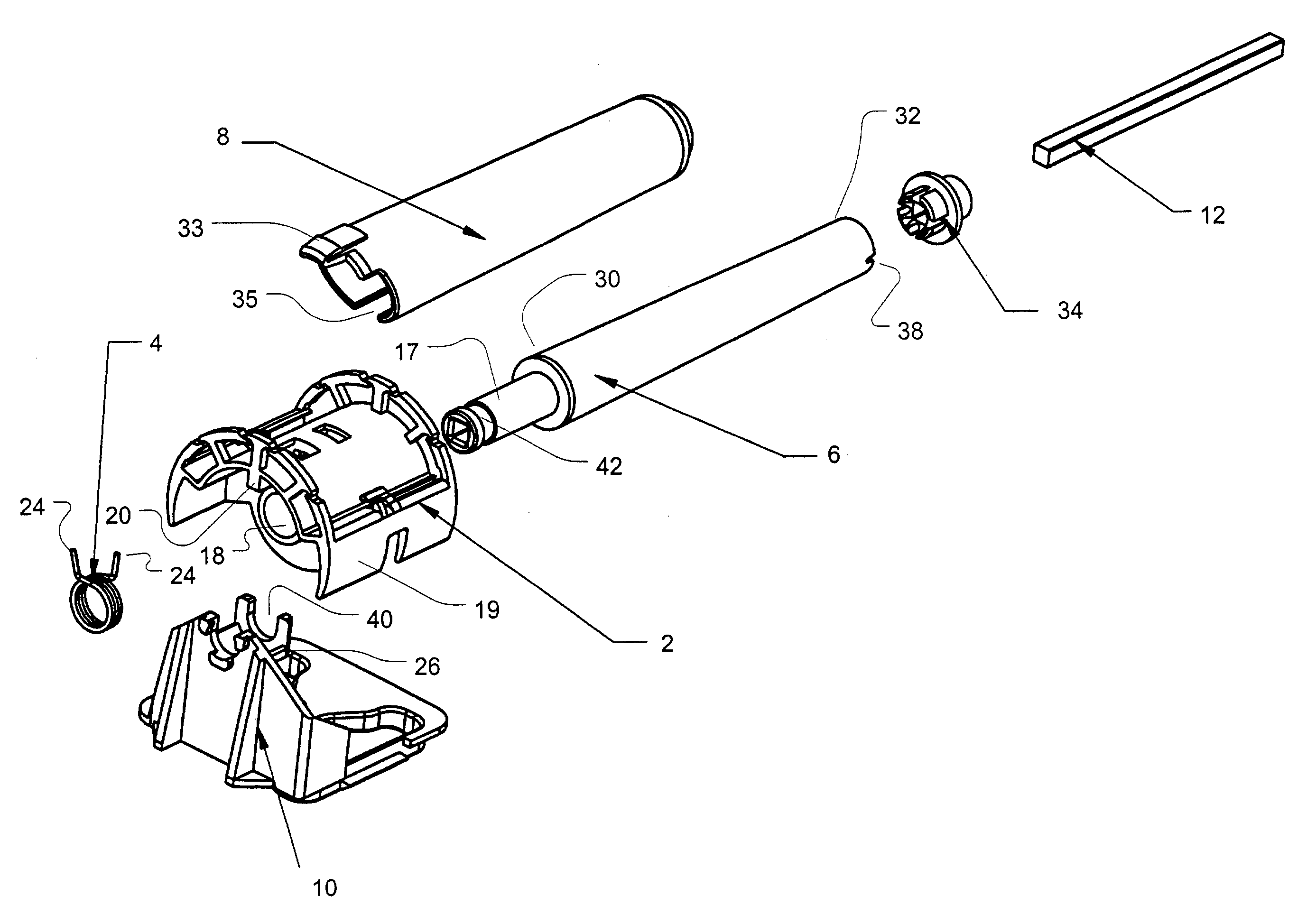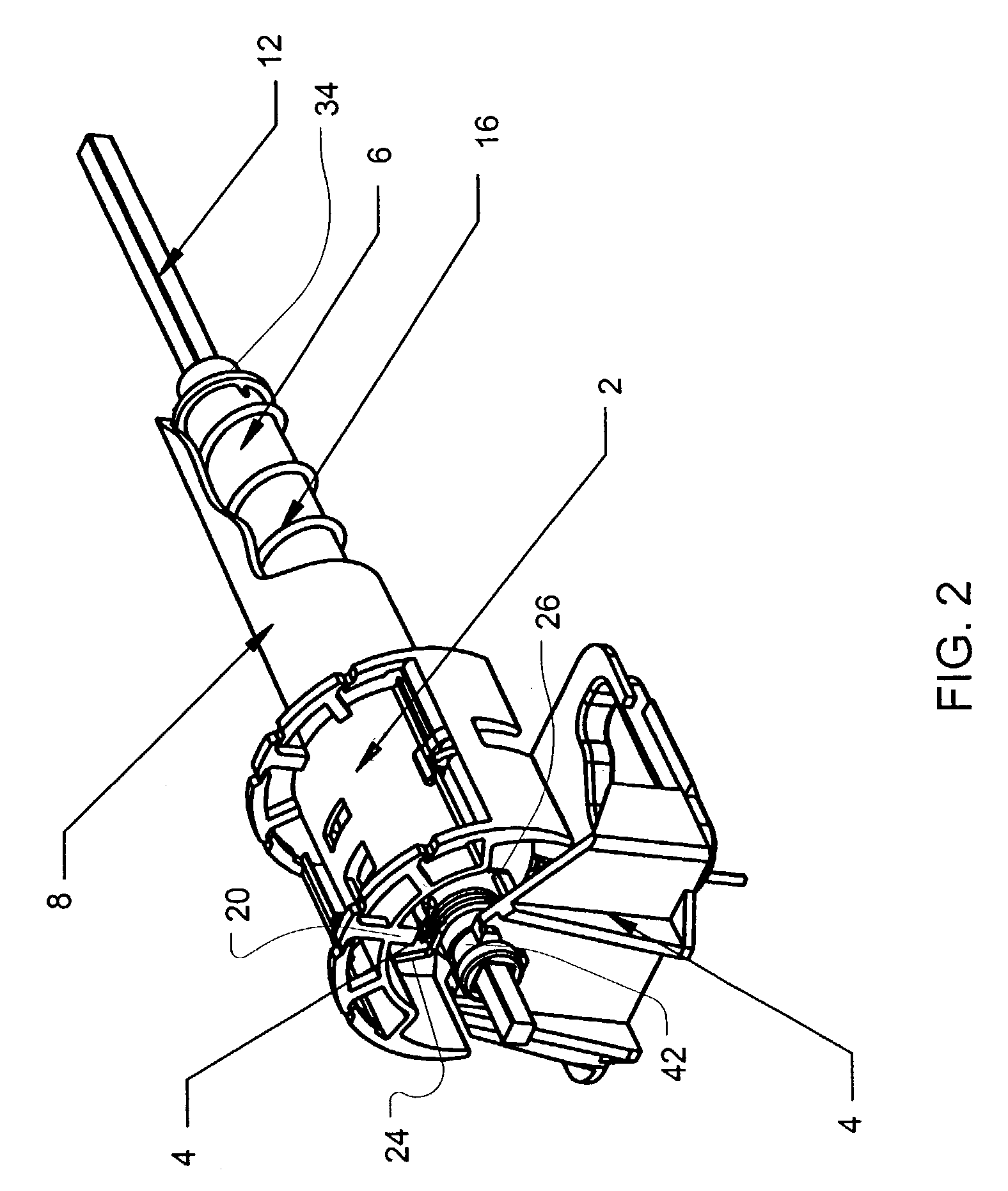Mono control lift and tilt mechanism for horizontal blinds
a technology which is applied in the field of mono-controlled lifting and tilting mechanism for horizontal window blinds, can solve the problems of limiting the application of the device, difficult structure manufacturing, and large number of prior art mono-controlled lifting and tilting mechanism problems, and achieve the effect of reducing frictional hold
- Summary
- Abstract
- Description
- Claims
- Application Information
AI Technical Summary
Benefits of technology
Problems solved by technology
Method used
Image
Examples
Embodiment Construction
[0026]As illustrated in FIGS. 1–4, the invention includes a horizontal blind control that includes a tilting drum 2, torsion spring 4, cord-gathering shaft 6, cord cover 8 and support cradle 10. The components may be installed in a headrail H of a blind B. When combined with a turning shaft 12, a clutch 13 to rotate the shaft, a ladder cord 14 or ladder tape, a lifting cord 16, the components perform the dual functions of lifting the slats S of the blind B and / or tilting the slats S of the blind B to provide the desired level of shading or obstruction of light through a window on which the blind is installed. The preferred embodiment of each of the structures of the above components and a description of their operation are each addressed in turn.
[0027]The tilting drum 2 as the name implies is a component involved in achieving the function of tilting the slats S. The tilting drum 2 is configured to rest within the support cradle 10 when combined with the cord-gathering shaft 6 such t...
PUM
 Login to View More
Login to View More Abstract
Description
Claims
Application Information
 Login to View More
Login to View More - R&D
- Intellectual Property
- Life Sciences
- Materials
- Tech Scout
- Unparalleled Data Quality
- Higher Quality Content
- 60% Fewer Hallucinations
Browse by: Latest US Patents, China's latest patents, Technical Efficacy Thesaurus, Application Domain, Technology Topic, Popular Technical Reports.
© 2025 PatSnap. All rights reserved.Legal|Privacy policy|Modern Slavery Act Transparency Statement|Sitemap|About US| Contact US: help@patsnap.com



